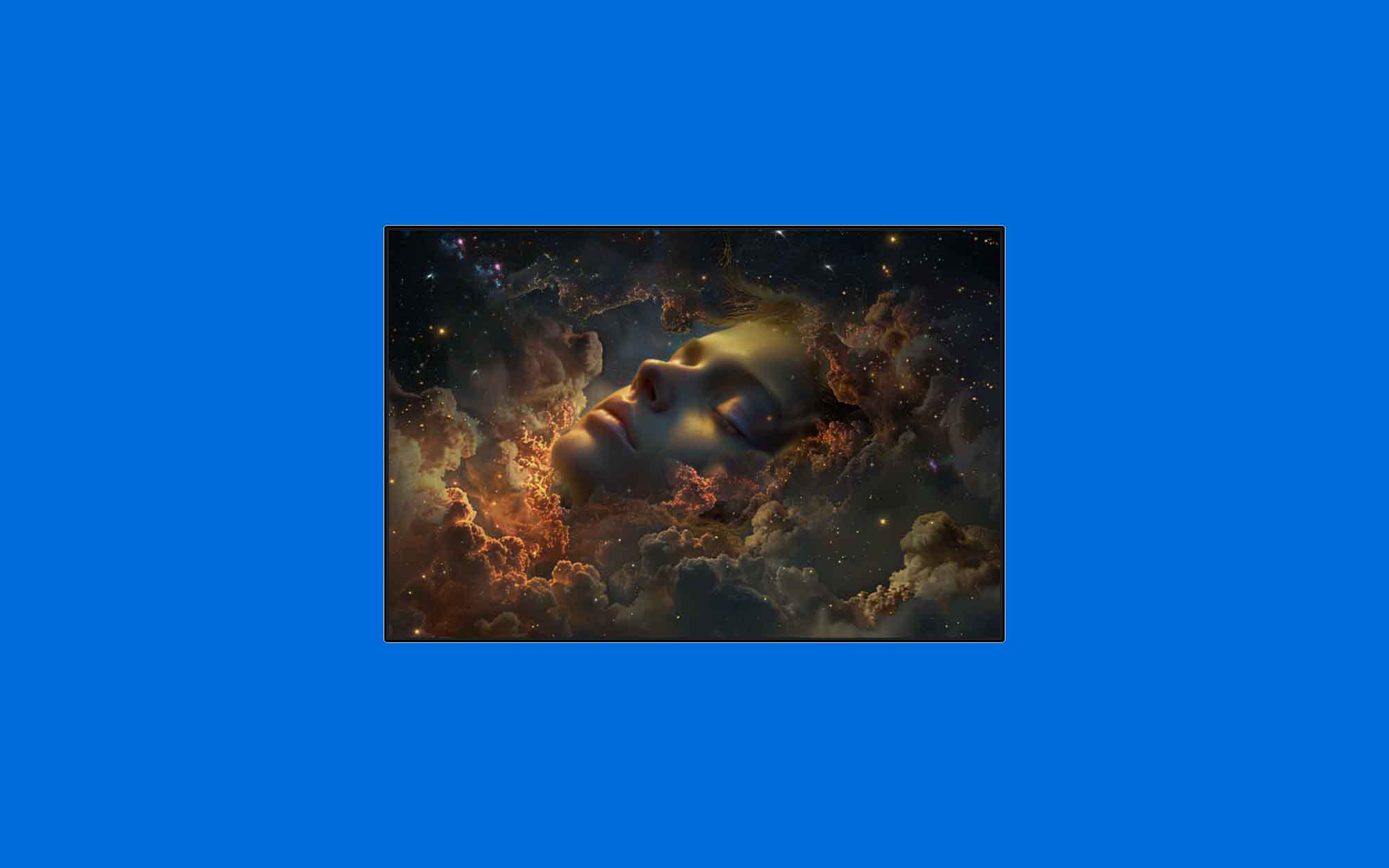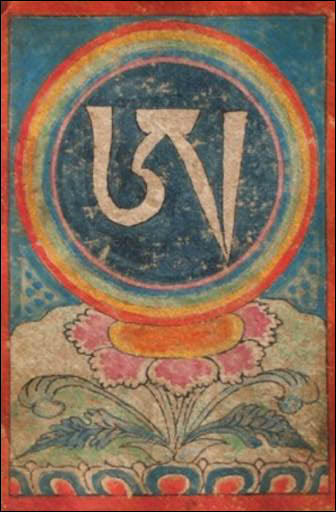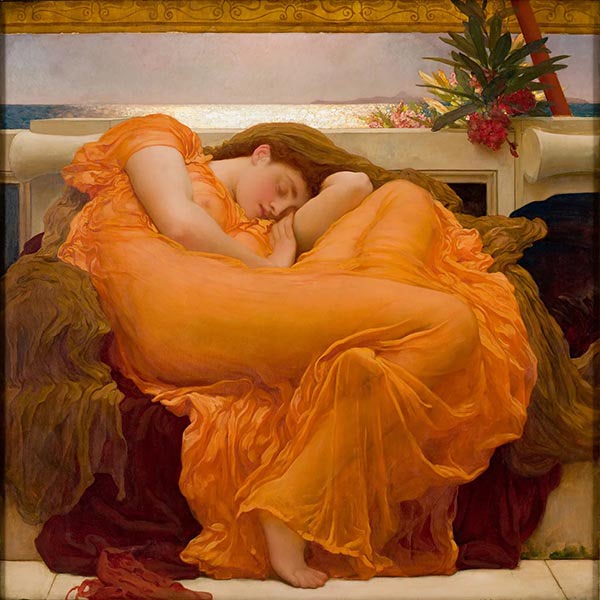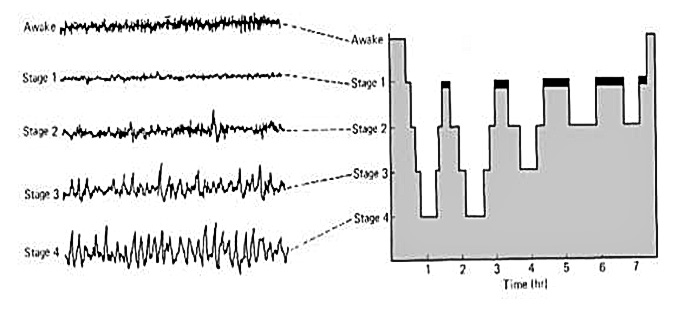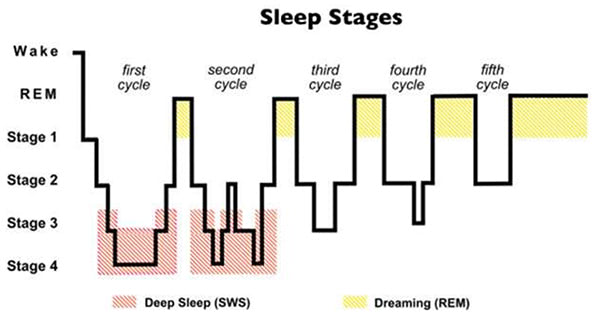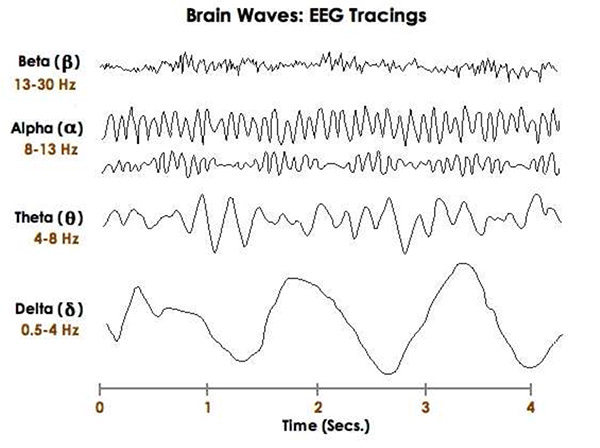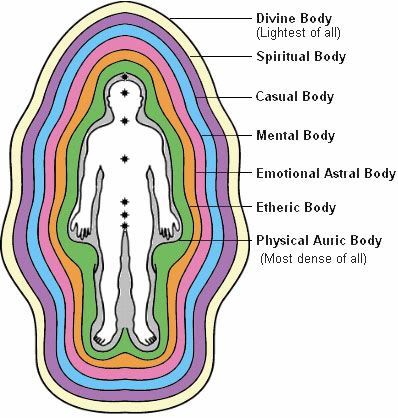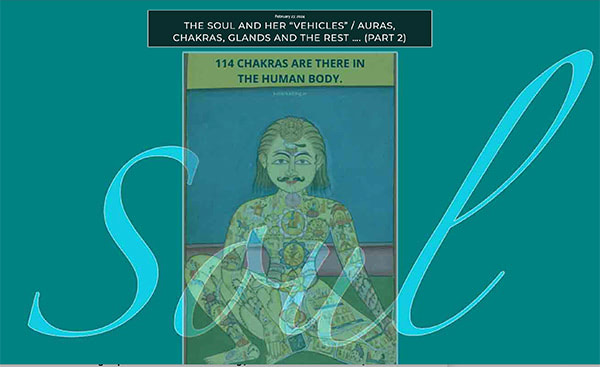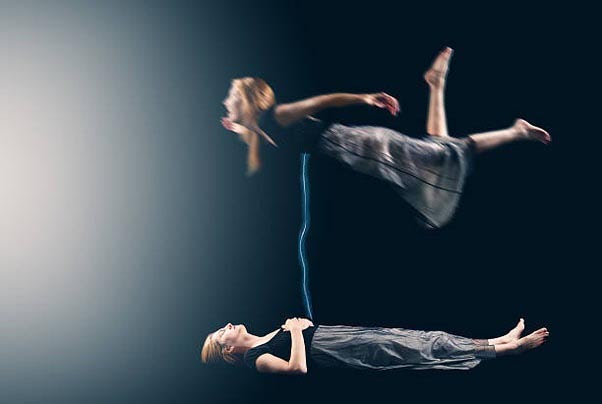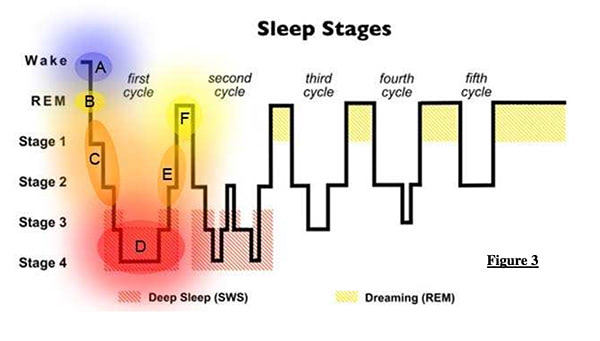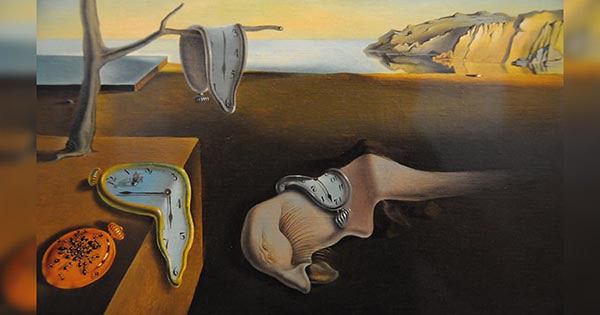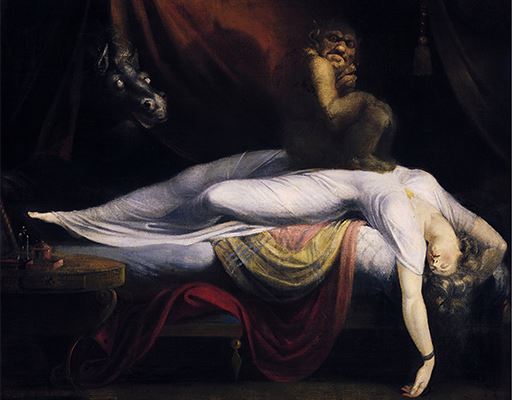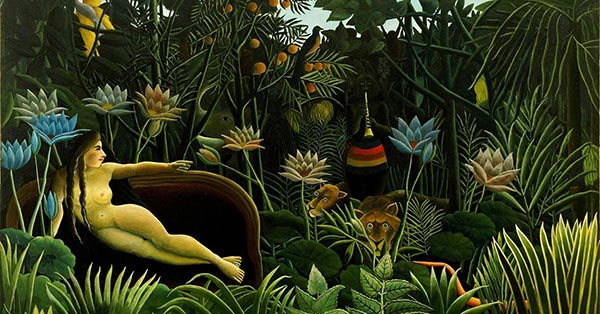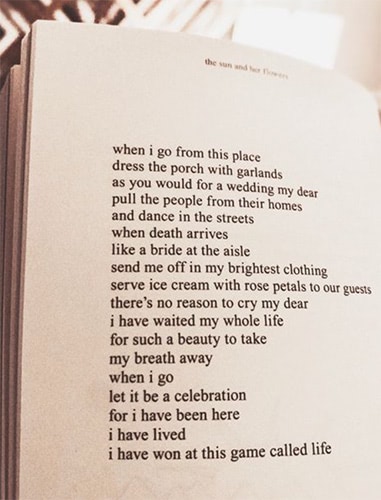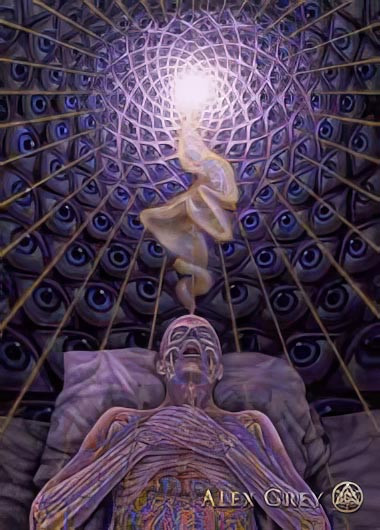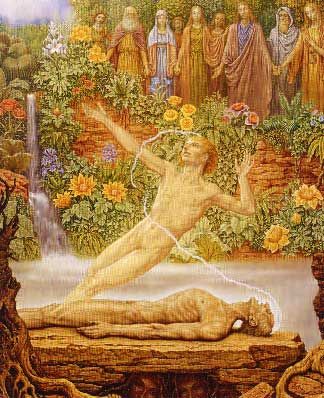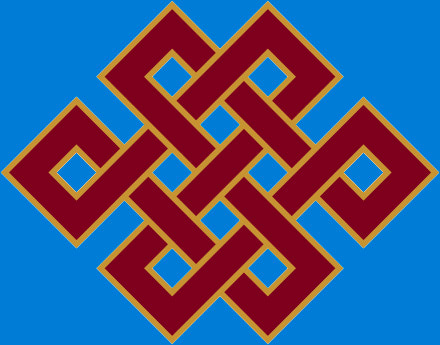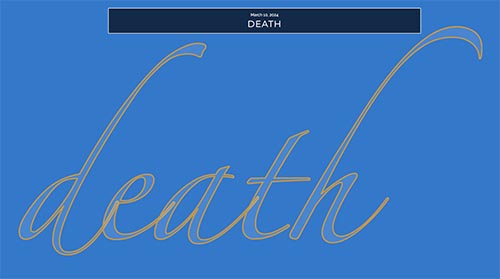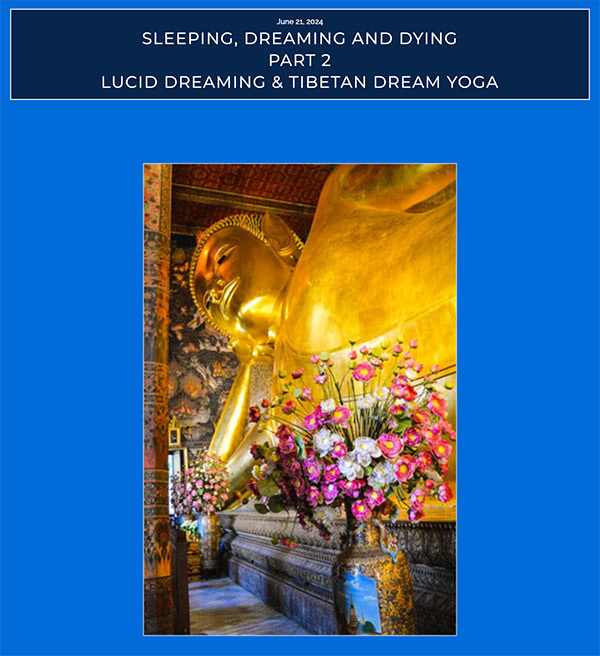[ Press PLAY and you can listen to a reading of this article ]
[ I recommend to use Google Chrome browser if you want to listen to the audio.
I still need to optimize the audio player for some of the other browsers. ]
sleeping, dreaming and dying
why it happens, how it works & what it is good for
Itinerary / a map & overview / shortcuts to specific chapters
- Introduction of the theme of sleeping, dreaming and dying
- Sleeping
- Why do we sleep? What is it good for?
- Neuroscience studies what’s going on in our brain when we sleep
- What are the Sleep Cycles we go thru when we go to sleep?
- Anthroposophy’s perspective on Sleep and Dreams
- Rudolf Steiner’s clairvoyant view gives a specific and detailed picture of the various stages of our consciousness during our daily cycle of sleeping and waking
- Anthroposophy’s wider conception of the human being
- DREAMING – what actually happens when we dream. How do those funny pictures and stories come about?
- Steiner’s approach to sleep and dream exploration. Dreaming as portals to the Spiritual Worlds
- Our abilities of Imagination, Inspiration and Intuition in Dream Exploration
- DYING – from the clairvoyant perspective
- The Process of Dying
- The Process of Death is a Transition, is just another in-between state, another another Bardo
Itinerary / a overview
shortcuts to specific chaptersx
- Introduction of the theme of sleeping, dreaming and dying
- Sleeping
- Why do we sleep? What is it good for?
- Neuroscience studies what’s going on in our brain when we sleep
- What are the Sleep Cycles we go thru when we go to sleep?
- Anthroposophy’s perspective on Sleep and Dreams
- Rudolf Steiner’s clairvoyant view gives a specific and detailed picture of the various stages of our consciousness during our daily cycle of sleeping and waking
- Anthroposophy’s wider conception of the human being
- DREAMING – what actually happens when we dream. How do those funny pictures and stories come about?
- Steiner’s approach to sleep and dream exploration. Dreaming as portals to the Spiritual Worlds
- Our abilities of Imagination, Inspiration and Intuition in Dream Exploration
- DYING – from the clairvoyant perspective
- The Process of Dying
- The Process of Death is a Transition, is just another in-between state, another another Bardo
listen ➡
They call sleep ‘la petite mort’ in French,
the language of poets.
‘Sleep is a little death’,
I find this rather beautiful and bittersweet.
We have to surrender, in order to ‘fall asleep’.
We have to let go of everything we know when we die.
In both cases we seem to loose consciousness, in both cases we go somewhere and we don’t exactly know, or know not at all where this ‘somewhere’ really is.
The land of dreams, the dreamtime.
The Bardo, the in-between state.
We know instinctively and for sure, that we will wake up tomorrow after a good night’s sleep, refreshed for another day of living.
And I know beyond a shadow of a doubt that I will ‘wake up’ to another incarnation after death, to another life.
It is interesting to note, that ‘la petite mort’ in modern language has often been used to describe the post-orgasmic state of quasi-unconsciousness that certain people experience after having an intense sexual experience.
It can refer to the spiritual release that comes with orgasm, a short period of melancholy or transcendence as a result of the expenditure of the ‘life force’.
Which is rather accurate as well, I would say.
The issue is always:
Letting go.
‘Each day is a little life: every waking and rising a little birth, every fresh morning a little youth, every going to rest and sleep a little death.’
Arthur Schopenhauer, Counsels and Maxims.
‘Sleep is a little death, dreams the whisperings of The Other who would invite us all into the eternal light.’
George R.R. Martin in ‘A Song of Ice and Fire’.
Why do we have to sleep, anyway?
What happens with us when we are laying there, passed out for 7 hours or so every night?
What are dreams?
Those flickering pictures, half remembered elaborate stories, quickly fading, mostly forgotten in the flash of awakening.
Where do they come from, what do they mean to us?
And why do we remember so little about the dreamworld, why is it so fleeting?
Do dreams mean anything relevant to our waking life?
All of that I wish to explore here, contemplate it as I always do. Not to get definite answers, rather to open myself to deeper understanding.
One of the verses in the Quran states:
‘It is He who takes your souls by night when you are asleep, and has knowledge of all that you have done by day.
Then He wakes you up again so that your life period be fulfilled.
Then in the end to Him will be your return.
Then He will inform you of that which you used to do.’
Living, sleeping, dreaming, dying.
All closely related mysteries.
Consciousness the key.
Tibetan Buddhism calls any of those states a Bardo,
a ‘in-between’.
[ In this article I wish to approach each of those three in-between states from the perspective of my own experience, thru art and poetry, through the insights of modern neuroscience as well as Freud/Jung dream-psychoanalysis as far as I am knowledgeable about those fields.
For me personally the views of Anthroposophy and Rudolf Steiner’s clairvoyant insights as well as Tibetan Buddhism’s Dream Yoga are of special interest.
I will do my best to re-structure my flow-of-consciousness text in a way that is easy for you to read and to grasp the main bits at a glance. ]
listen ➡
Ok, lets start with the first one of those in-between states:
Sleeping
Most every night when I finally switch off the light to go to sleep, there is a certain ‘aaaaaaahhh!’ Feeling that I feel all over my body.
Not that I am so very tired that I feel I need to rest, it’s just a kind of joy about diving in, going under, releasing the day.
Just a beautiful enjoyable looking-forwardness.
‘This is thy hour O Soul, thy free flight into the wordless.
Away from books, away from art, the day erased, the lesson done.
Thee fully forth emerging, silent, gazing, pondering the themes thou lovest best.
Night, sleep, death and the stars.’
‘A clear midnight’ by Walt Whitman
Frederic Leighton – ‘Summer Slumber’
We all sleep, thats a fact, as far as I know.
listen ➡
But why?
What for?
Well, intuitively I would say that it’s because it’s dark for quite some time around here on Earth. At least in those days and nights when we started to walk upright. We did not have artificial light then, right?
Earth rotating around the sun, like everything rotating has a rhythm. Day-and-night-rhythm, which calibrates our internal clock.
The body’s internal clock, called the Circadian Rhythm, is a 24-hour cycle that regulates sleepiness and alertness in response to light changes in the environment. This rhythm affects nearly every tissue and organ in the body, influencing important functions such as sleep patterns, hormone release, appetite, digestion, and body temperature.
That’s a good enough reason to lay down and sleep, I guess.
And so do our other brothers and sisters, the animals.

We humanoids can only dream about such abilities. 😆
Healthy adult humans sleep 6 – 9 hours.
Well, healthy students can easily get to 12 hrs per day if undisturbed. 😕
So, in conclusion we can say that a lot of our lifetime is spent sleeping, ‘dead to the world’! A third of it, actually. That is quite a lot!
Why?
What’s that good for?
I think in the past the common view was, that sleep is just a passive state necessary for rest and recovery. This changed significantly with the findings of neuroscience, which demonstrated that sleep is an active phenomenon involving complex brain activities.
Early researchers like Sigmund Freud recognized the active nature of sleep, which he initially explored through a neurological lens before moving towards psychoanalysis.
listen ➡
Neuroscience studies what’s going on in our brain, simply speaking.
The development of Electroencephalography, also known as EEG is crucial for studying brain activity during sleep. EEG measures electrical activity in the brain and has revealed different sleep stages characterized by distinct patterns of brain waves.
These patterns shift dramatically as a person moves from wakefulness into various stages of sleep.
Sleep Patterns:
Those EEG brainwave patterns clearly show, that sleep is not a uniform state but comprises several stages, each with unique characteristics:
1. Non-REM Sleep:
Divided into four stages, non-REM sleep involves progressively deeper sleep.
The EEG patterns show a transition from mixed frequency waves to high-amplitude, low-frequency Delta waves typical of deep sleep.
2. REM Sleep:
Characterized by rapid eye movements, aka REM, and brain activity similar to wakefulness,
REM sleep is associated with vivid dreaming. During this stage, the body experiences temporary muscle paralysis to prevent acting out dreams.
REM Sleep is a important phase of the sleep circle:
What is REM sleep:
REM sleep, Rapid-Eye-Movement-Sleep, refers to a phase of sleep characterized by quick, random movements of the eyes. It is one of the stages of sleep that make up the sleep cycle.
– Nature of REM Sleep:
During REM sleep, the brain is highly active, similar to waking states, despite the body being in a state of paralysis to prevent acting out dreams.
– Dreaming during REM sleep:
Most vivid dreams occur during REM sleep. This stage is associated with intense brain activity, including memory consolidation and emotional processing.
– Physiological Characteristics of REM sleep:
REM sleep is marked by increased heart rate, breathing rate, and irregularity in brain waves similar to those observed during wakefulness.
– Role of REM sleep in Sleep Cycle:
REM sleep typically occurs cyclically throughout the night, becoming longer in duration as the night progresses. It is essential for overall sleep quality and cognitive function.
– The Health Implications of REM sleep:
Adequate REM sleep is crucial for cognitive function, emotional regulation, and overall well-being. Disruptions in REM sleep can affect memory, mood, and may contribute to disorders like insomnia or sleep apnea.
listen ➡
What are the Sleep Cycles we go thru when we go to sleep?
‘Sleep cycle’ refers to the pattern of stages the brain and body go through several times while we sleep.
There are typically five stages, Stages 1, 2, 3, 4, and REM sleep. Each stage plays a role in different aspects of your sleep quality and overall health.
– Stage 1:
Light sleep, where we drift in and out of being awake. This stage can be easily disrupted.
– Stage 2:
Slightly deeper sleep, where o\ur heart rate slows and body temperature drops.
– Stages 3 and 4:
Deep sleep stages, also known as slow-wave sleep, where our body repairs tissues, stimulates growth, boosts immune function, and builds energy for the next day.
– REM Sleep:
Occurs about 90 minutes after falling asleep and can last up to an hour. It’s when most dreaming occurs, and our brain is active and engaged, while your muscles are ‘paralyzed’ to prevent us from acting out our dreams.
The sleep cycle consists of those stages that the brain cycles through multiple times during a typical night. These stages are characterized by distinct brainwave patterns, which can be measured using electroencephalography, EEG.
In this diagram the hours of sleep are shown, with sample recordings of the EEG as it changes during various stages and the cycle repeats several times during the night. The black bar on top si when REM sleep appears.
To sum up and answer the question ‘Why do we sleep’ from the perspective of Neuroscience and physiology:
1. Sleep is important for Restoration and Replenishment:
Sleep is thought to restore and replenish the body and brain. However, the exact processes being replenished remain unidentified.
2. Sleep enables important Cognitive Processes:
REM sleep is proposed to be crucial for cognitive processes such as learning, memory consolidation, and creative problem-solving. This perspective aligns with psychoanalytic views that consider dreaming a space for reimagining and conceptualizing new possibilities.
~~~
~~
~
listen ➡
Honestly, i don’t want to go much further into the physiology and the brain activity here because i find it more interesting to paint a detailed picture of what is actually happening in the subtle realms, the aura, our different subtle bodies.
The spiritual science of Anthroposophy has given me many interesting answers in that regard.
‘The Dream of Venus’ by Annael Anelia Pavlova
Anthroposophy’s perspective on Sleep and Dreams
Anthroposophy is a comprehensive worldview primarily developed by Rudolf Steiner at the beginning of the 20th century.
It is based on the advanced clairvoyant abilities and observations of Steiner and his views the human being according to a integrative science of the spirit.
Anthroposophy attempts to reawaken human beings to the realities of the spiritual worlds while simultaneously providing practical tools for self-development, social transformation, educational, farming, and medical techniques, as well as developing new artistic modes of expression.
In a way, it can be viewed as a method of approaching the transformation of consciousness on cosmic as well as the human scale.
As a part of this perspective, the human experience of sleeping and dreaming is necessarily included.
listen ➡
Rudolf Steiner’s clairvoyant view gives quite a specific and detailed picture of the various stages of our consciousness as it moves continually through the daily cycle of sleeping and waking.
Simply put it goes like this:
When awake, the ego and astral body are united with the etheric and physical bodies, and when asleep, the ego and astral leave the etheric and physical. During the night, the ego and astral bodies return to the etheric and physical without joining them, but they are united enough that the ego experiences some of the activity occurring in the etheric body. This is when we remember some of the pictures and stories we call dreams.
Hey, hey!
Hold on!
This is not simple, right?
What’s all those bodies got to do with sleeping and dreaming???
🙄
Well, dear reader, i know, i know!
And I am warning you. 😎
Anthroposophy is a very wide horizon, very deep waters and it will take a while to explain sleeping an dreaming in clairvoyant terms.
I have been studying this kind of stuff long time ago when I was working in Waldorf Kindergarden. It’s quite a task to bring it all into a few paragraphs that make easy sense but I’ll try.
Please keep an open mind and bear with me:
[ The following descriptions are loosely based on two talks given by Rudolf Steiner, ca. 1923:
On the Life of the Soul: The Human Soul in the Twilight of Dreams.
I will also take the freedom and add my own grain of salt to it, I hope it gives a bit of 21st Century flair to it all.
I think it may be useful to once again include a little bit about the sleep cycles and brainwave states we experience when going to bed.
In order to understand the nature of dreams, we must examine the human consciousness in its awake state and its sleeping state.
If we examine an EEG of an awake person who falls asleep, we see that he/she moves through periods of dreaming, and then awakens, we can see how the frequency and type of electrical activity in the brain varies according to a particular brainwave pattern.

This diagram represents an average night of sleep, where we move from waking state into the sleep stages 1, 2, 3 and 4, then back up into a REM, the rapid eye movement period where dreaming occurs.
This activity cycles about five times, with each REM period getting longer as the night progresses.
The drawing shows approximately what type of brainwave activity occurs in the various stages of sleep.
The waking state is characterized by high-frequency Beta brainwave activity, which gives way to slower frequency, higher amplitude waves as sleep deepens, moving quickly through calm wakefulness in Alpha to light sleep in Theta, and deep sleep in Delta brainwaves.
 
It turns out that the brain’s activity in dreaming is very similar to its activity in the waking state.
High frequency but low amplitude.
We can therefore say that dreaming is a state of consciousness between that of waking and dreamless, non-REM sleep.
It is, in a way, a mixture of the state of wakefulness with that of proper sleep.
In the dream state, we are not awake in the sense of having the capacities normally attributed to our normal daytime awake consciousness, such as the ability to think through a single logical, complex line of thought.
~~~
~~
~
listen ➡
Anthroposophy can offer insight
into the nature of dreaming and sleeping
but it requires a wider conception of the human being.
Rather than consisting solely of a physical body, Anthroposophy, like many other spiritual traditions the world over, recognizes other parts or members of the human being which exist at various non-physical levels.
The Physical Body can be considered to be the “lowest” or most dense aspect of the human being, which we share with the mineral world.
Closely connected to our physical body is what could be called a life-force-body, or Etheric Body, which is responsible for the organization and transformation of the physical substances of the body in the processes of growth and decay.
Without an etheric body we would be corpses, immediately subject to the purely physical law of entropy.
“Above” the etheric body, Anthroposophy identifies the part of the human being that is shared with the animal kingdom, the Astral Body, through which we experience desire, passion, antipathy, pain, pleasure and all other feelings.
The astral body, which can be called the soul or at least an aspect of The Soul. It is responsible for connecting human experience to the worlds that surround us through our senses.
The human being has an additional member, which can be called the ‘Ego‘, or ‘I – being‘, which sets us apart from the animal kingdom.
It is the part of us that can say “I” to itself, can self-reflect and grow spiritually.
So, simply put, the human being is comprised of
Body (physical and etheric),
Soul (astral),
and Spirit (I-being),
working as a united, interweaving whole.
In the Anthroposophic perspective that goes much further beyond the human horizon, the I-being is the lowest member of the human’s original spiritual nature.
You can find out more specific information here:
The soul and her ‘vehicles’ – Auras, Chakras, Glands and the rest, aka the Spiritual Realms 🙄
~~~
~~
~
listen ➡
dreamning
So, what actually happens when we dream.
How do those funny pictures and stories come about?
From the perspective of Anthroposophy, when a person goes to sleep, the physical and etheric bodies lie together on the bed, while the astral body and ego separate and leave the two lower members.
The physical body is kept from the process of dissolution in sleep because the etheric body remains, engendering all the necessary functions to sustain life.
But not consciousness! Consciousness is a function of the ego, and the nature of the experiences available to it depend upon its level of development.
Because of the present configuration of the ego and its relation to the lower members, the ego cannot generally remain awake without contact with the etheric and physical bodies.
In dreamless sleep, because the astral and ego are separated from the lower bodies, the consciousness of the ego becomes dim to the point of complete unconsciousness.
It should not be imagined that the astral and ego separate completely from the lower bodies, but that still a slight connection remains between them.
Clairvoyants of various traditions have spoken of a luminous thread connecting the dreamer back to the physical body as seen by spiritual vision.
Sometimes this thread is also called the Silver Cord.
This connection is what allows a person to be woken by physical events, such as an alarm clock.
If the ego and astral separated completely, the etheric body would soon lose its ability to maintain the physical form, and death would result.
In terms of dreaming sleep, the ego and astral body turn back towards the physical and etheric bodies, but not to the point of fully uniting with them. Rather it is as if they hover nearby, between the physical world and the world that could be called the Astral World, in which the ego and astral body move when in dreamless sleep.

 
In the awake state at A, the ego, astral, etheric, and physical bodies are united, and we experience the normal daytime consciousness, the awake consciousness.
Then, as relaxation towards sleep occurs, the ego and astral body begin to loosen slightly from the etheric and physical bodies, corresponding with the shift to alpha waves.
At C, the ego and astral bodies are in further separation, until at D they are almost completely separated.
Then, over the course of the night, the ego and astral bodies will begin to turn back towards the physical and etheric bodies lying on the bed. E.
At F, the astral and ego are close enough to the etheric and physical bodies that enough support exists for the ego to have the experience of dreaming, but not enough that full, day-awake consciousness is possible.
Where do those sometimes phantastic and sometime frightening pictures and movies come from
that we call our Dreams.
‘The Persistence of Memory’ by Salvador Dalí
O God! Can I not grasp
Them with a tighter clasp?
O God! can I not save
One from the pitiless wave?
Is all that we see or seem
But a dream within a dream?
Edgar Allan Poe, ‘A Dream within a Dream’.
‘The Nightmare’ – Henry Fuseli
The astral body or Soul, which is distinct from the Spirit, is the part of the human organism that is capable of forming symbols.
One of its functions is to take in the world through sensorial perception, which it reflects towards the ego, our sense of ‘I’ or ‘Self’.
Our ego feels itself to be awake when it is in contact with the physical world through the senses. The thoughts of our daytime awake consciousness are tied closely to the physical world because of our perceptions thru the senses.
This kind of consciousness fills most of our waking experience.
But in dreamless sleep, it is precisely our physical senses that become dim for us, to the point of complete non-existence.
Our astral body and ego recede from the physical and etheric bodies, and without training, the ego cannot remain awake to the pictures that then flow from the Astral Realm into our astral body.
Those pictures do not come from the physical world which it has just turned away from, but from the wider astral and spiritual worlds in which it is now embedded.
We experience a loss of not just the capacity for rational thought, but also of the ego’s own ability to perceive itself.
In between the astral and physical bodies lies the etheric body, working to metabolize, repair, and regulate all the activity of the life organs. The etheric body can be thought of as a tapestry of weaving forces that connect strongly to the physical body, penetrating it through and through with activity and energy.
In order to understand dreaming, it is towards the etheric body that we must look.
From the perspective of Anthroposophy, dreaming is precisely the state of consciousness experienced by the ego when it unites itself with the etheric body.
Becoming aware of passing through the etheric body gives the ego the experience of the dream, and this experience comes through and is mediated by the symbol-forming capacity of the astral body.
The dream content itself has its source in the etheric body, but the astral body transforms that primal content into symbols that are presented to the ego.
It is as if the weaving etheric forces have to become clothed in the symbols formed by the astral body before the ego can awaken to them.
It is just this process that gives the dream its dreamlike quality. We have the sense when awake that there is more to our dream than the manifest form in which it is presented to us. But that somehow beneath this exterior a deeper reality lies in waiting.
~~~
~~
~
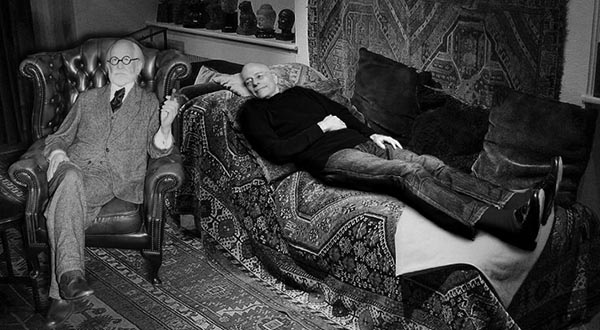
Obviously, there are also other methods to do that.
Probably much cheaper. 😆
But i’ll focus on that later on in the article.
There is a lot of literature available about Freud and Jung and their psychoanalytic approach to decode dreams and work with their patients in therapy.
Visions in the night_ Jungian and ancient dream interpretation
Download it if you are interested to decode your dreams
🙄
It’s not exactly my cup of tea, so I rather leave it up to you to do some research in this direction if you are interested.
‘The Dream’ by Henri Rousseau
listen ➡
I have always been more inspired to approach the sleep states and dream-time realities like an explorer, an adventurer going into unknown lands.
And Rudolf Steiner was exactly such a guy, just with a much much more advanced skillset and refined consciousness than myself.
This might be the reason I share his views here in such a length.
Steiner’s approach to sleep and dream exploration. Dreaming as portals to the Spiritual Worlds.
Steiner emphasizes that the integration of imagination, inspiration, and intuition is crucial for a holistic understanding of sleep states and dreamtime and the Higher Worlds.
Each faculty builds upon the others:
– Imagination provides the initial images and symbols.
– Inspiration interprets these images, offering insights and understanding.
– Intuition connects the individual directly with spiritual truths and realities.
Steiner associates those faculties
with the Three Stages of Sleep:
1. – In the lightest sleep stage, we experience dreams that can be recalled upon waking. Steiner connects this stage to Imagination.
These dreams are influenced by by personal as well as cosmic thought-forces, suggesting that during this light sleep, we traverse a realm filled with formative cosmic forces. What Freud called the personal subconscious and also parts of what Jung called Personal Archetypes.
This state allows for some continuity of consciousness, as the dream experiences can be brought back into our waking life. However, these dream images are often varied and diffused.
2. – The second, deeper sleep stage, where the human soul encounters the activities of spiritual beings. This stage, which Steiner associates with Inspiration, involves witnessing the deeds of angelic beings and other spiritual entities within the cosmos.
In this state, the soul is more detached from the physical processes of the body and engages in a more profound spiritual experience, often imperceptible to ordinary consciousness.
3. – The third stage is the deepest form of sleep, which Steiner connects to Intuition. Here, the soul undergoes experiences that are typically beyond conscious recall upon awakening.
This stage involves confronting spiritual challenges and absorbing deep wisdom, which might manifest as feelings of unease or challenge upon waking, suggesting an engagement with profound spiritual tasks during sleep.
Steiner views dreams
as a threshold to spiritual reality.
Unlike the waking state, which is bound by the laws of physical nature, dreams transcend these limitations, providing access to a different realm where spiritual laws prevail. Dreams signify the potential for awareness within the otherwise unconscious domain of sleep. They are seen as a bridge to the Spirit, indicating that our consciousness extends beyond the physical and engages with spiritual dimensions during sleep.
Sleep & Dream’s Spiritual Significance.
Steiner suggests that sleep, dreams, and even death are opportunities for the soul to immerse itself more deeply in the divine flow of existence.
Through dreams, the soul connects with spiritual forces and beings, facilitating spiritual growth and understanding. By maintaining a degree of self-awareness during sleep, individuals can cultivate a richer spiritual life and gain insights that inform their waking consciousness.
Steiner’s teachings emphasize the importance
of integrating these nocturnal spiritual experiences
with daily life.
He advocates for exercises that enhance spiritual awareness and intuition, enabling individuals to bring the wisdom and experiences from sleep into their waking lives, thereby fostering a harmonious balance between the physical and spiritual aspects of existence.
listen ➡
What are those abilities of
Imagination, Inspiration and Intuition?
And how can an adventurous
Inner Cosmonaut 😎 use them,
to discover the vast realms of sleep and dreamtime
and the higher worlds?
1. Imagination:
– Imagination is the ability to form mental images and representations that are not present to the senses. For Steiner, this is not merely a creative or fanciful activity but a disciplined skill and ability that allows the spiritual researcher to visualize and explore the subtle dimensions of sleep and dreams.
– Application of the Imagination: By developing a trained imagination, I can begin to perceive the symbolic content of dreams and the spiritual realities they represent. This involves seeing beyond the literal events of the dream to the underlying spiritual messages.
2. Inspiration:
– Inspiration, in Steiner’s framework, is a higher level of cognition than imagination. It involves receiving insights and guidance from the Spiritual World. This faculty allows the individual to hear the inner spiritual voice and understand the deeper meanings behind dream symbols and experiences.
Through inspiration, a spiritual researcher can discern the messages conveyed by dreams, which often involve moral and ethical guidance, personal growth, and spiritual truths. Inspiration acts as a bridge between the imaginative representations and the deeper spiritual insights they contain.
3. Intuition
– Intuition is the highest of these faculties, providing direct knowledge and understanding without the intermediary of sensory experience or imaginative imagery. It is an immediate apprehension of spiritual truths.
Intuition allows the spiritual researcher to grasp the essence of spiritual experiences encountered during sleep and dreams. It enables a direct connection with the spiritual world and a deep understanding of the individual’s spiritual path and development.
Regular practice of meditation and mindfulness can help develop these faculties, enabling a more profound connection with the spiritual dimensions of sleep.
The enhanced understanding gained through these faculties leads to greater, more holistic self-awareness and spiritual development, transforming sleep from a passive state into an active field of spiritual exploration.
~~~~~~~
~~~~~
~~~
~
listen ➡
dying
‘funeral’ by Rupi Kaur
At the beginning of the article I mentioned the expression ‘la petite mort’.
‘Sleep is a little death’.
Letting go of waking consciousness,
drifting into heavenly sleep.
Now what about ‘The Big Death’?
Letting go of all we know,
sliding into The Big Unknown.
Alex Grey – ‘The Meaning of Dying’
What would Steiner say about this one?
Well, a lot of quite interesting things, actually!
Death from the Perspective of Rudolf Steiner’s Teachings.
Steiner’s perspective on death is not merely a cessation of physical life but a transformative process that connects the physical world with the spiritual realms.
His teachings provide a framework for understanding death as a transition rather than an end, emphasizing its role in the evolution of the human spirit.
Death as a Transition.
In Steiner’s view, death is a natural and essential part of the human journey. He described death as a transition from the physical world to the spiritual world, where the soul continues its evolution.
According to Steiner, life and death are part of a continuous cycle, with each death and subsequent rebirth contributing to the growth and development of the individual’s soul.
This perspective is rooted in the concept of reincarnation. He believed that the soul undergoes multiple incarnations, each providing unique experiences and lessons that contribute to spiritual development.
Death, therefore, is not an end but a passage to another state of being, where the soul can reflect on its past life and prepare for future incarnations.
listen ➡
The Process of Dying.
Separation of the Physical and Etheric Bodies.
Steiner describes the initial stage of dying as the separation of the physical body from the etheric body, which he also calls the life body.
The etheric body is responsible for maintaining life processes and vitality. Upon death, this body detaches from the physical shell, and the individual experiences a panoramic review of their life.
This life review is vivid and detailed, allowing the person to relive their entire life in a brief span, seeing it from a comprehensive perspective that includes the consequences of their actions and the emotional impacts on others.
Dissolution of the Etheric Body.
After the life review, the etheric body begins to dissolve, typically over a period of a few days.
During this time, the individual remains connected to their earthly experiences but gradually moves towards the spiritual realm. The dissolution of the etheric body signifies the end of the immediate connection to the physical world, and the soul starts to ascend towards higher planes of existence.
In some spiritual traditions the separation of the etheric body from the physical body is expressed as the ‘Breaking of the Silver Cord’
Johfra Bosschart – ‘Crossing over’
Entry into the Astral World.
Next, the individual enters the astral world, which Steiner describes as the realm of desires, emotions, and instincts.
This stage involves the separation of the astral body, or soul body, from the etheric remnants. In the astral world, the individual confronts and processes their earthly desires and attachments.
This phase is often challenging, as it involves purifying the soul from lower instincts and emotions that were part of the physical existence.
Purification and Reflection.
In the astral realm, the soul undergoes a period of purification. This process, sometimes referred to as “karmic cleansing,” entails a deep reflection on one’s actions, thoughts, and feelings during their lifetime.
The soul experiences the impact of its deeds from the perspective of those affected, fostering a deeper understanding of moral and ethical implications. This purification helps the soul release attachments and prepare for its further journey into the spiritual world.
Ascension to the Devachanic Plane.
After the astral purification, the soul ascends to the Devachanic Plane, also known as the mental or heavenly world. Here, the soul engages in a higher level of existence characterized by spiritual reflection and learning.
In the devachanic plane, the individual reviews their life’s experiences in the context of their soul’s development and spiritual growth. This stage is marked by a profound understanding of one’s life purpose and the lessons learned through various incarnations.
Preparation for Reincarnation.
Steiner’s teachings emphasize the cyclical nature of life and death, with the soul eventually preparing for reincarnation. In the higher spiritual realms, the soul, guided by spiritual beings, plans its next earthly life.
This planning involves choosing circumstances, challenges, and relationships that will best support the soul’s continued evolution and karmic balance.
The preparation phase ensures that each reincarnation is a step forward in the soul’s journey towards higher consciousness and spiritual maturity.
The Role of Karma.
Central to Steiner’s view of dying and reincarnation is the concept of karma. Karma is the spiritual law of cause and effect, where every action, thought, and feeling influences future experiences.
During the afterlife, the soul comprehends the karmic consequences of its past actions and integrates this understanding into its preparation for future lives.
This karmic learning process is essential for the soul’s progression towards higher states of being and eventual spiritual liberation.
Spiritual Connections and Guidance.
Throughout the process of dying and the afterlife journey, Steiner asserts that individuals are supported by spiritual beings and guides.
These entities assist in the transition, provide insights, and help the soul navigate the spiritual realms.
Additionally, the living can support the dead through thoughts, prayers, and rituals, maintaining a connection that transcends physical death.
~~~~~
~~~
~
listen ➡
This process of Death as a Transition, as another in-between state, as another Bardo is deeply explored and explained in detail a thousand of years before Rudolf Steiner by the Tibetan Lamas and Yogis. As laid out in ‘The Tibetan Book of Death.
‘Endless Knot of Eternity’ – Tibetan Buddhism
I have already written at length about ‘The Bardo of Dying’ in a recent article, contemplating it from different angles and pointing at practical approaches to that destiny that nobody will escape ; )
Check it out here, if you are interested.
I intend to write about ‘Lucid Dreaming’, about the ‘Tibetan Dream Yoga’ and ‘Yoga Nidra’ as well as Buddhas teachings about sleep and the dream state in the next article.
Sleeping, dreaming and dying – Part 2.
Thank you for your interest and your mental stamina.
Thanks for reading.
May you be in Peace.
May all Beings be in Peace.

